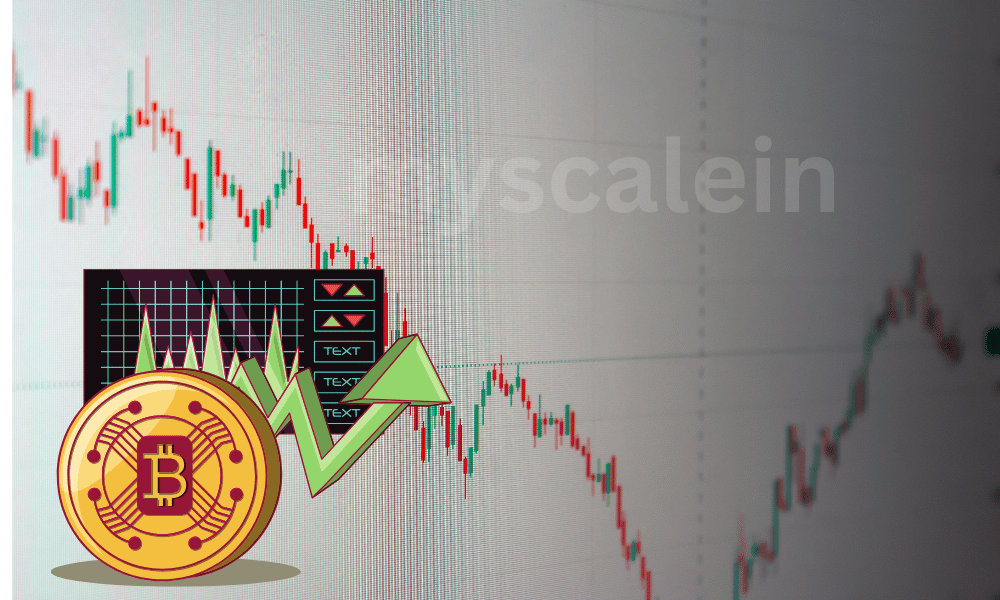Cryptocurrency exchanges are at the heart of the digital asset economy. They are the gateways that allow traders to buy, sell, and swap cryptocurrencies. But as the number of users and trading volumes grow, exchanges face one big question: how do you scale effectively? Scaling isn’t just about adding more servers; it’s about handling exponential demand, maintaining security, and delivering a seamless experience.
If you’re building or managing a crypto exchange, scaling is the key to survival and long-term success. Let’s dive deep into the strategies that can help you grow sustainably.
What Is Scaling in Cryptocurrency Exchanges?
Scaling a cryptocurrency exchange goes beyond adding more servers. It’s about creating an infrastructure capable of managing millions of users, hundreds of thousands of trades per second, and massive transaction data—without breaking. At its core, scaling focuses on three things: performance, reliability, and adaptability.
- Performance: Transactions must be lightning-fast, even during peak trading spikes.
- Reliability: The platform must remain online, regardless of traffic surges or sudden market movements.
- Adaptability: The system should evolve as new features, tokens, and regulations emerge.
For example, when Bitcoin prices surge, millions of traders rush in at once. Without proper scaling, exchanges freeze, leaving users frustrated. A well-scaled exchange prevents this, ensuring smooth operations during high-pressure moments. In short, scaling ensures growth is sustainable and user trust remains intact.
The Importance of Scalability in a Crypto Exchange
Scalability is the difference between an exchange that thrives and one that collapses under pressure. Why? Because crypto markets operate 24/7, and downtime isn’t an option. Let’s break it down:
- Meeting User Demand: As adoption rises, exchanges must accommodate thousands of new sign-ups daily. Poor scalability means turning away potential users.
- Avoiding Downtime: Even a few minutes of downtime can result in millions in lost revenue and damage to reputation.
- Building Trust: Traders need confidence that your platform won’t crash when the market heats up.
Think about Coinbase during bull runs—it often makes headlines for outages. Those moments show how critical scalability is. A reliable, always-available exchange wins loyalty, while slow or unstable platforms lose market share quickly.
Key Factors to Consider Before Scaling
Scaling isn’t just about technology. Before making any moves, you must assess critical factors:
- Market Research: Understand whether demand justifies scaling. Are you seeing user growth, or are you preparing prematurely?
- Regulatory Compliance: Many exchanges collapse under the weight of ignored regulations. Compliance ensures survival.
- Technology Readiness: Outdated tech stacks can’t handle large-scale growth. A modern, flexible infrastructure is a must.
Imagine building a skyscraper—you don’t start adding floors without ensuring the foundation can bear the weight. Similarly, scaling a crypto exchange requires foresight and preparation in market trends, regulations, and technical capabilities. Get this wrong, and growth could actually destroy your business.
How Much Capital is Needed to Scale a Crypto Exchange?
Scaling a crypto exchange requires significant financial investment, as multiple areas demand funding. On average, scaling can cost several million dollars, depending on the size, target market, and features offered. Key expenses include:
- Infrastructure Costs: Cloud servers, database management, and advanced trading engines.
- Liquidity Provision: Partnering with liquidity providers or building internal pools.
- Security Systems: Multi-layered protection, audits, and wallet management.
- Regulatory Compliance: Licensing, legal teams, and KYC/AML systems.
- Staffing & Operations: Customer support, developers, and marketing.
Read to know more: Scale-In’s Private Club: The Benefits of Joining an Exclusive Crypto Investment Community
Infrastructure Scaling for Crypto Exchanges

The backbone of any exchange lies in its infrastructure. Infrastructure is like a city’s plumbing system—it must be built to handle today’s demand while preparing for tomorrow’s. Without a strong foundation, scaling will lead to breakdowns, bottlenecks, and frustrated users.
To scale successfully, you need systems that are fast, reliable, and expandable.
- Cloud-Based Solutions: Services like AWS, Google Cloud, or Azure offer scalable server solutions that can expand instantly as demand grows.
- Decentralized Architecture: Reduces the risk of a single point of failure. A distributed system ensures uptime even if one node fails.
- Database Management: Use distributed databases like Cassandra or MongoDB to store and retrieve massive volumes of data efficiently.
Enhancing Security While Scaling
The bigger your exchange grows, the bigger the target you become for hackers. Scaling without scaling your security is a recipe for disaster.
- Multi-Layered Security: Firewalls, DDoS protection, and end-to-end encryption should work together to protect the platform.
- Cold and Hot Wallets: Most user funds should remain in offline cold storage, while only a small portion stays online in hot wallets for active trading.
- Regular Audits: Continuous penetration testing and third-party audits identify weaknesses before attackers do.
Liquidity Management
Liquidity is the lifeblood of any exchange. Without it, traders face slippage, poor pricing, and frustration.
- Partnering with Liquidity Providers: Working with established providers ensures deep order books and competitive spreads.
- Building Internal Pools: Exchanges can create liquidity pools to stabilize trading.
- Cross-Exchange Integrations: Linking with other exchanges helps share liquidity and reduce trading gaps.
User Experience (UX) Optimization
Scaling isn’t just about numbers—it’s about people. A smooth user experience keeps traders loyal.
- Simplified Onboarding: KYC should be secure but user-friendly. Complicated forms drive users away.
- Fast Deposits and Withdrawals: Speedy transactions increase trust. Nobody likes waiting days for withdrawals.
- Mobile-Friendly Platforms: With most users trading on phones, mobile optimization is essential.
API and Third-Party Integrations
APIs are the secret weapon behind scalable exchanges.
- Payment Gateways: Support for cards, bank transfers, and stablecoins attracts global users.
- Trading Bots: Professional traders rely on APIs for algorithmic trading. Offering this feature boosts engagement.
- Third-Party Tools: Integrations like analytics dashboards or cross-chain swaps enhance functionality without building everything in-house.
Scaling Customer Support
More users = more questions. Scaling customer support is vital.
- 24/7 Multilingual Support: Crypto is global, so support must be, too.
- AI Chatbots: Bots handle common queries instantly, leaving complex cases for human agents.
- Knowledge Base: Tutorials, FAQs, and community forums empower users to solve issues themselves.
Compliance and Legal Framework
No matter how strong your exchange, ignoring compliance will end it.
- KYC & AML: Know Your Customer and Anti-Money Laundering processes are essential.
- Regulatory Updates: Stay ahead of legal changes in every country you serve.
- Global Expansion: Different regions have unique rules—hire local legal experts.
Marketing and Community Building
Scaling requires people, not just tech.
- Organic Growth: Engage users through educational content, AMAs, and webinars.
- Influencer Partnerships: Collaborate with trusted names in crypto to boost credibility.
- Transparency: Publish regular reports to build trust.
Revenue Models for Scaled Exchanges
Once a cryptocurrency exchange scales successfully, it can unlock multiple revenue streams that go far beyond simple trading fees. The most common source is transaction fees, where users pay a small percentage per trade. Even fractions of a percent add up quickly when volumes are high.
Another lucrative model is listing fees, where new projects and tokens pay to be listed on the exchange, gaining access to a larger audience. Some exchanges also offer premium memberships that provide perks like lower trading fees, advanced analytics, or faster withdrawals. Margin trading and lending services generate revenue through interest rates, while staking services allow exchanges to earn by participating in proof-of-stake networks. Additionally, exchanges can earn from API integrations, advertising partnerships, and institutional services tailored to large investors. By diversifying revenue streams, scaled exchanges build financial resilience, ensuring sustainable profits even during periods of low trading activity.
Challenges and Risks of Scaling a Crypto Exchange
Scaling a cryptocurrency exchange is a complex process that comes with both opportunities and significant risks. The biggest challenges –
- Market Volatility: Sudden crashes can overload systems.
- Cybersecurity Threats: Bigger exchanges attract bigger attacks.
- Regulatory Crackdowns: A single misstep can lead to fines or bans.
Scaling a cryptocurrency exchange offers massive opportunities, but it also comes with significant challenges and risks. One major hurdle is market volatility, where sudden surges or crashes can overwhelm systems, causing downtime and financial losses. Cybersecurity threats are another critical risk, as larger exchanges become prime targets for hackers, phishing attempts, and DDoS attacks.
Maintaining liquidity during growth is equally tough, since thin order books can drive users away. Regulatory uncertainty also poses a big challenge—different countries enforce varying rules, and non-compliance can lead to fines, bans, or shutdowns. Additionally, infrastructure strain is common, with exchanges struggling to process high volumes of trades without lag. Finally, poor user experience or inadequate customer support can damage reputation. To scale successfully, exchanges must invest in robust technology, advanced security, compliance frameworks, and strong liquidity strategies, ensuring growth doesn’t compromise trust or stability.
What’s the Biggest Challenge in Scaling a Cryptocurrency Exchange?
The biggest challenge in scaling a cryptocurrency exchange is balancing growth with security and reliability. As user demand surges, platforms must expand their infrastructure while ensuring safety and compliance. Key hurdles include:
- Security Threats: Larger exchanges attract hackers, making multi-layered security essential.
- Liquidity Management: Without deep liquidity, trading becomes inefficient and users leave.
- Regulatory Compliance: Adapting to ever-changing laws worldwide is complex and costly.
- System Performance: Handling millions of transactions per second without downtime requires advanced infrastructure.
Future Trends in Scaling Cryptocurrency Exchange
The future of scaling looks exciting:
- AI-Powered Platforms: AI can predict demand surges and optimize systems in real time.
- Cross-Chain Trading: Seamless trading across blockchains will define the next generation of exchanges.
- Integration with DeFi: Decentralized finance will merge with cryptocurrency exchanges to create hybrid platforms.
Conclusion
Scaling a cryptocurrency exchange is both a challenge and an opportunity. From infrastructure and liquidity to compliance and community building, every element plays a role in long-term success. The key is balance—scaling too fast risks collapse, while scaling too slow risks irrelevance. With the right strategy, your exchange can thrive in the fast-moving world of digital assets.
FAQs
Can small exchanges compete with big players?
Yes,by foucsing on niche markets,unique features,or superior user experience
What role does DeFi play in scaling exchanges?
DeFi introduces new tools like decentralized liquidity pools and cross-chain swaps, helping exchanges expand their reach.
How important is liquidity for scaling?
It’s critical. Without liquidity, users face poor trading conditions, driving them away.
